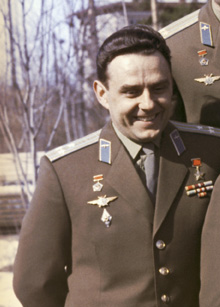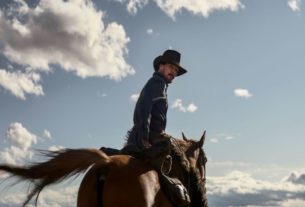This is the story of a cosmonaut named Vladimir Komarov who agreed to fly aboard an already doomed spacecraft to protect his friend Yuri Gagarin. He was the first man to die on a space mission.
Yuri Gagarin is known to have been the first human to go into space, in 1961. Although he never flew again, his expertise was called upon a few years later, in 1967, for a flight that was to integrate his friend Vladimir Komarov, whom he had to replace if he encountered a problem.
At that time, the Soviet Union was about to celebrate its 50th anniversary. To mark the occasion, the authorities decided to release two spacecraft into orbit. Piloted by Vladimir Komarov, Soyuz 1 was to be launched first, before being joined by Soyuz 2, with three other cosmonauts on board. The two capsules were then to meet, Komarov was to make a spacewalk and integrate Soyuz 2, while two of the cosmonauts on board Soyuz 2 were to integrate Soyuz 1. All these beautiful people then had to return to Earth.
Deaf ears
A few months before the launch, it quickly became clear that this flight was not going to go as planned. More than two hundred structural problems were indeed discovered on Soyuz 1 (the kind of problems likely to lead to the death of the pilot). A ten-page memo was then written, listing every flaw, but no one had the courage to pass it on to then-boss Leonid Brezhnev. Yuri Gagarin then went on to send him a letter himself expressing his concerns, but these were not heard.
Komarov’s friends did try to convince him to refuse to pilot the craft, but Komarov knew that if he had to withdraw, he would send his friend Gagarin to the pipe-breaker. He then refused, aware that he would not return. Behind the curtain, he demanded that if something went wrong, his funeral would take place in the open air, probably in revenge on the people who were sending him to his death.
On launch day, Gagarin went by standard protocol, requiring a pressure suit before stepping down to the launch pad to speak with Komarov. Some thought he wanted to delay the launch long enough to have it canceled, but if that was his plan, it didn’t work. Komarov took off well. And as expected, things quickly turned sour.
A crash at 140 km/h
During the flight, the solar panels did not deploy. The capsule was then not sufficiently supplied with electricity, which led to a disruption of the navigation equipment. Vladimir was then unable to orient his ship towards the sun as planned. Communications were lost between the 13th and 15th orbits. He finally managed to orient his capsule in the right direction and began his reentry during the 19th orbit.
During the descent, his main parachute did not open properly, while the backup flared up. Deprived of a braking system, the capsule ship hit the ground at a speed of 140 km/h, then began to catch fire. A few days later, he had a state funeral and his charred corpse was displayed for all to see, as he had requested.

Email: colin@satprwire.com Phone: +44 20 4732 1984
Colin has been working in the business industry for quite a sometime and he recently made the decision to become a full-time business journalist. At Daily Research News, he also helps us take care of the business writing.


